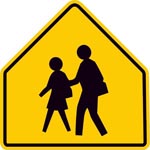Children, Youth, Families, and Schools, Nebraska Center for Research on
ORCID IDs
Document Type
Article
Date of this Version
2013
Citation
Gerdes, J., Durden, T., Manning, L., & Torquati, J. (2013, June). The Importance of Outdoor Experiences in the Primary Years. NebGuide G2202. University of Nebraska–Lincoln Extension, Institute of Agriculture and Natural Resources.
Abstract
Daily experiences in natural environments can have immediate and long-lasting benefits for children. Increased physical activity is associated with decreases in depression and anxiety and increases in levels of concentration. It also is a key strategy in addressing childhood obesity.
Research overwhelmingly supports the need for children to experience natural environments often and in a variety of ways. For many reasons, children are spending increasing amounts of time inside the house watching television and playing video games. Also, many schools are cutting recess times or eliminating recess all together in favor of spending more time during the day focusing on academic skills. According to research, children who play outdoors regularly:
• become fitter and leaner;
• develop stronger immune systems;
• have more active imaginations;
• have lower stress levels; • play more creatively; and
• have greater respect for themselves and others.
Daily experiences in the out-of-doors promote and strengthen many aspects of learning and development. Natural environments have a calming effect on children and help them to be more focused and less distracted. Within the last decade, a large body of research has emerged that examines how the natural world influences development and learning. This research has linked several health and learning issues to a lack of both children and adults engaging in regular experiences in the natural world. Let’s consider some of the consequences of our lifestyles:
• Two out of every 10 children in the United States are clinically obese, and that rate has quadrupled in the last three decades.
• There has been a large increase in the use of behavioral medications for young children, with the largest increase (66 percent) in the use of antidepressants for preschoolers.
• Prescription drug use for the treatment of Attention Deficit Hyperactivity Disorder (ADHD) is also skyrocketing.
• In the last decade, the appearance of socially inappropriate behaviors in children and their difficulty in relating to others has become glaringly apparent.
Included in
Public Affairs, Public Policy and Public Administration Commons, Social Work Commons, Sociology Commons



Comments
Copyright University of Nebraska 2013